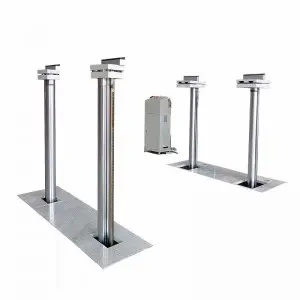The cylinder is one of the most fundamental shapes in geometry, celebrated not only for its elegant simplicity but also for its wide-ranging applications in various fields, from engineering to architecture. This three-dimensional figure, characterized by its two circular bases connected by a curved surface, offers a perfect blend of mathematical beauty and practical utility. Understanding the cylinder involves delving into its properties, exploring its applications, and uncovering the historical significance it holds across different cultures and civilizations.
Understanding the Geometry of a Cylinder

Exploring the Fascinating World of the Cylinder: Its Geometric Properties, Applications, and Intriguing History
First and foremost, the geometry of a cylinder is defined by its dimensions: the radius of its circular bases and its height. The formula for calculating the volume of a cylinder is given by:
\[ V = \pi r^2 h \]
Where \( V \) is the volume, \( r \) is the radius of the base, \( h \) is the height, and \( \pi \) (approximately 3.14159) is a constant that represents the ratio of the circumference of a circle to its diameter. The surface area of a cylinder, which includes both bases and the curved surface area, can be computed using the formula:
\[ A = 2\pi r(h + r) \]
Here, \( A \) signifies the total surface area, which highlights the interdependence between the radius and the height of the cylinder.
These basic formulas allow one to calculate the cylinder’s properties for practical applications, such as determining how much liquid a container can hold or estimating the amount of material needed to create cylindrical components.

Exploring the Fascinating World of the Cylinder: Its Geometric Properties, Applications, and Intriguing History
Applications of Cylinders in Everyday Life
The cylinder is ubiquitous in everyday life, appearing in a multitude of forms and serving various functions. One of the most common examples is a water or gas pipe, where the cylinder shape allows for an efficient flow of fluids. The same shape is also observed in containers like cans and bottles, designed to maximize volume while minimizing the amount of material needed.
In the field of engineering, cylinders are foundational in machinery and mechanical systems. Piston cylinders, for instance, are critical components in engines, where the movement of pistons within cylindrical chambers plays a vital role in generating power. This cyclical motion transforms chemical energy from fuel into mechanical energy, demonstrating the cylinder’s importance in modern technology.
Architecturally, cylinders are celebrated for their aesthetic appeal as well as their structural advantages. Columns in ancient Greek and Roman architecture exemplify this, where cylindrical shapes not only provide support but also contribute to the beauty and symmetry of buildings. Modern structures continue to utilize the cylindrical form, seen in skyscrapers, bridges, and domes, where its strength and stability are paramount.
The Historical Perspective of the Cylinder
The history of the cylinder extends back to ancient civilizations, with early examples found in Mesopotamian, Egyptian, and Greek cultures. The use of cylindrical seals, small carved cylinders rolled onto clay, dates back to around 3500 B.C., serving as a means of identification and as a form of artistic expression. These cylinders played a critical role in administrative processes, trade, and art.
In mathematics, the study of the cylinder was significantly advanced during the era of ancient Greek mathematicians such as Archimedes. He explored the properties of geometric shapes, including the cylinder, and established the fundamentals of calculating their volumes and surface areas. This foundation laid by Archimedes has continued to influence mathematical study and applications into the present day.
The Cylinder in Modern Science and Technology
In contemporary science, the cylinder’s relevance has only increased. From cylindrical lenses in optics to the design of rockets and various vehicles, the principles associated with cylinders play crucial roles in innovation and technological advancements. In robotics, cylinders often serve as components in hydraulic systems, enabling the movement and functionality of robotic limbs.

Exploring the Fascinating World of the Cylinder: Its Geometric Properties, Applications, and Intriguing History
In conclusion, the cylinder is much more than just a geometrical shape; it is a pivotal structure that weaves throughout various facets of human life. From its fundamental principles in geometry to its applications in engineering, architecture, and art, understanding the cylinder allows us to appreciate its multifaceted significance. As we continue to explore new uses for cylindrical forms in technology and design, the cylinder’s legacy as both a mathematical and a practical entity remains firmly entrenched in our understanding of the world.Quick Lift
